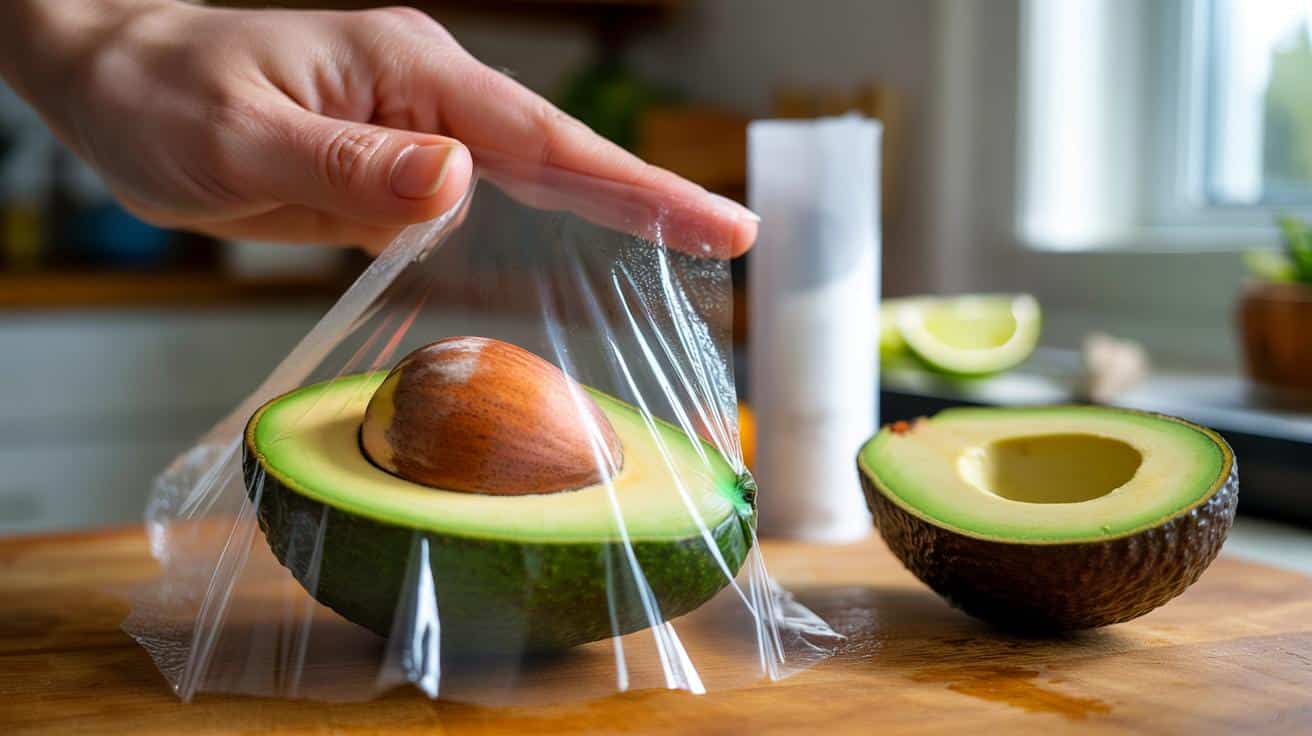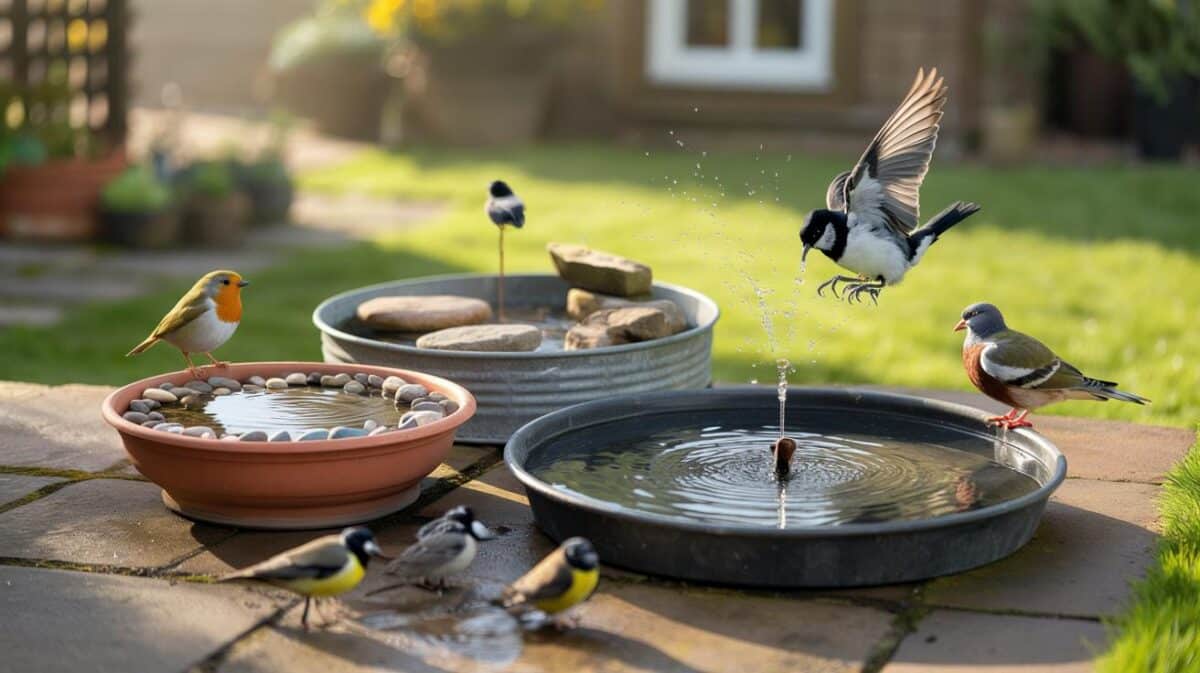There’s a simple way to hold that fresh green.
Half an avocado now and half later sounds sensible, until the second half turns brown and limp. A cheap, everyday fix cuts that risk sharply, keeps your slices photo‑ready, and stops money going in the bin.
Why your avocado browns so fast
Once you slice an avocado, oxygen hits its flesh and triggers a natural enzyme called polyphenol oxidase. That reaction creates brown pigments on the cut surface. The texture softens, the flavour dulls, and a perfectly good piece of fruit starts to look past its best.
The answer is not magic, it’s air control. Reduce contact with oxygen and you slow the chemistry. Do that well and you buy yourself a full extra day, sometimes two.
Wrap the cut surface tightly with cling film so no air can sit on the flesh, then chill it. That simple barrier keeps slices green for up to 48 hours.
The £1 item that makes the difference
Cling film is the unsung hero here. It’s cheap, it’s already in most kitchens, and when applied correctly it forms a near‑airless seal over the avocado’s surface. That seal keeps oxygen out and freshness in.
Step-by-step: how to store sliced avocado with cling film
- Leave the skin on any unused portions where possible to protect one side naturally.
- Press a sheet of cling film directly onto the exposed flesh, smoothing from the centre out to remove every air pocket.
- Wrap the rest of the fruit tightly so the film hugs the contours with no loose corners.
- Pop the wrapped avocado into a small airtight container for belt‑and‑braces protection.
- Refrigerate at 3–5°C. Aim to use within 24–48 hours for best colour and texture.
Direct contact is the trick: the film should touch the avocado, not just cover the container.
Does lemon or lime help?
A light brush of lemon or lime juice adds citric acid, which slows the same enzyme reaction. Use it if you like the slight tang. If you don’t, cling film alone works well. For guacamole, smooth the surface, press film directly onto the dip and seal the container — that stops browning on top without flooding it with juice.
How the main methods compare
| Method | Freshness (approx.) | Taste impact | Eco notes | Safety |
|---|---|---|---|---|
| Cling film pressed to flesh | 24–48 hours | No change | Single‑use plastic | Safe if chilled |
| Beeswax wrap (pressed firmly) | 24–36 hours | No change | Reusable | Safe if chilled |
| Lemon/lime + cling film | Up to 48 hours | Slight citrus | Minimal waste | Safe if chilled |
| Oil film + container | 24–36 hours | Richer mouthfeel | Zero plastic | Safe if chilled |
| Submerged in water | Green surface | Diluted flavour | Water waste | Not advised for hygiene |
Small tweaks that boost your results
Keep the stone in the unused half. It shields a portion of the surface area, meaning less to protect. If you’ve sliced the fruit completely, stack slices together neatly before wrapping so fewer edges meet the air. For sandwiches and salads, build them just before eating; if you must prep ahead, brush slices with citrus, wrap tightly, and assemble later.
A vacuum sealer works brilliantly if you have one, as it pulls out the oxygen entirely. If not, press the wrap gently but firmly and follow with a snug container — the double barrier delivers similar gains.
What about smell or flavour transfer?
Avocados absorb odours. A sealed wrap and container stop fridge smells creeping in and keep the fruit tasting clean. Avoid storing next to onions, garlic or strong cheeses unless that’s the profile you want on tomorrow’s toast.
Fridge temperature matters: aim for 3–5°C. Warmer shelves speed the browning, even if the avocado is wrapped well.
Waste less, spend less
Households throw away fresh produce worth tens of pounds each month. If you paid £1–£1.50 for an avocado, stretching it across two breakfasts without a brown surface is a direct saving. The cling film you need costs pennies per use. Prefer a greener swap? A tight beeswax wrap, pushed firmly onto the cut face, does a similar job and lasts for months.
Guacamole that stays green
Air is the enemy of dips because the entire surface is exposed. Press film onto the top of the guacamole, smoothing out any bubbles, then lid the bowl. Add a thin layer of lime‑spiked water only if you plan to pour it off fully and stir before serving; a firm film‑on‑top seal avoids any dilution.
Food safety and shelf-life guidance
- Store wrapped, cut avocado in the fridge only. Do not leave it out on the counter.
- Use within 48 hours. Discard if it smells sour, feels slimy, or shows mould.
- A light brown film can be scraped off; underneath may still be green and fine to eat.
- Avoid long soaks in water. Standing water around cut produce isn’t hygienic.
If you buy too many, freeze smart
For longer storage, freeze mashed avocado with a teaspoon of lemon or lime juice per fruit. Portion into small tubs, press film onto the surface, lid and freeze. Thaw in the fridge and use for smoothies or toast spreads. Texture won’t suit neat slices, but the flavour holds well.
Planning tips for busy mornings
Choose avocados that yield slightly to gentle pressure but aren’t soft. If yours is under‑ripe, leave it at room temperature in a paper bag with a banana for a day to hasten ripening. Once ripe, move it to the fridge to slow further softening. When you slice, decide what you’ll eat now, wrap the rest immediately, and note a “use by” time so it doesn’t linger past its best.
One sheet of cling film, pressed flush to the flesh, is the simplest way to beat browning — quick, cheap and effective.
Bonus ideas that stay green
Brush with ascorbic acid (vitamin C) powder dissolved in water if you prefer no citrus flavour. A whisper of olive oil can work too: it forms a hydrophobic film that limits oxygen access. Pair either method with cling film for a stronger result. For salads, dress leaves first, then tuck avocado beneath them so they shield the surface from air until serving.








Game-changer! Pressing the film directly onto the flesh actually worked—24 hours later, still green. Any tips to avoid plastic waste while getting similar results?